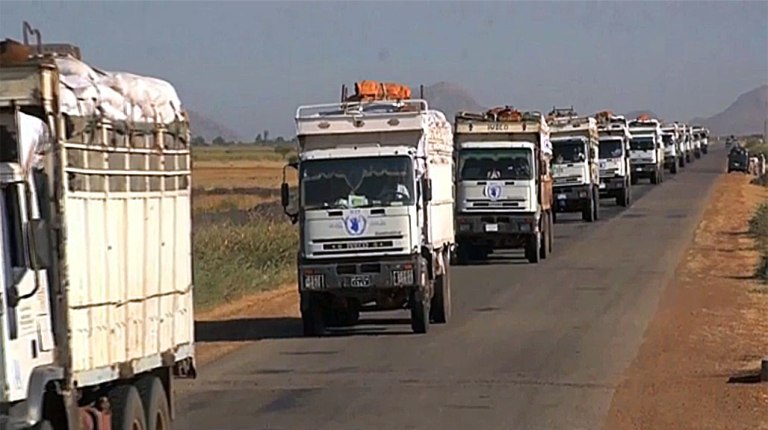Over 26 million people need food aid in East Africa: U.N
July 9, 2017 (KAMPALA) — The United Nations humanitarian agency (UNOCHA) said at least 26.5 million people in East Africa are in need of food assistance due to severe drought that is ravaging the region.

The report, for instance, said more than 3 million people have been displaced in the East African region over the last eight months alone.
“This is driven by successive episodes of drought and failed harvests, conflict, insecurity and economic shocks affecting the most vulnerable. Humanitarian needs are expected to increase in the months ahead,” partly reads the report.
The East Africa region currently faces one of the biggest humanitarian crises in its history. Recent rainfall has been insufficient to compensate for the delayed start of the rainy season, which brought below average levels of precipitation in March and April.
In South Sudan, it said, a famine outbreak affecting 90,000 people in Unity State was declared in February. Conditions in South Sudan continue to deteriorate with 5.5 million people expected to be severely food insecure in July, figures from the world body indicate.
According to the World Meteorological Organization (WMO), the probability of El-Nino occurring in the autumn is at 50 to 60 percent and is expected to affect Ethiopia, northern Kenya, Somalia, western Uganda, Rwanda, Burundi and southwestern South Sudan.
“The Fall Armyworm has appeared in western Kenya, southwestern Ethiopia, Burundi, Rwanda and central and western Uganda. In Uganda, it affects 54 districts, attacking up to 40 percent of maize farms in some areas,” the UN said.
According to OCHA, acute malnutrition, especially among refugees and children under five, pregnant and breastfeeding mothers remains a major concern in many parts of South Sudan, Sudan (Darfur, Kordofan region, and Eastern Sudan), northern Kenya and Uganda’s Karamoja region.
Meanwhile, the report said 640,000 people have sought protection since the start of 2017, making a total of 4.4 million refugees and asylum seekers in the Great Lakes and Horn of Africa region.
The majority of the newly displaced are from South Sudan and Burundi, with South Sudan being the fastest growing refugee crisis globally.
Almost 2 million people are internally displaced in South Sudan, and more than 1.9 million South Sudanese have fled the country as refugees and asylum seekers since December 2013.
(ST)
